First Day: Madre Deus is a city on a island surrounded by gas tanks
and tubes and signs alerting that WE are dangerous
for THEM :-(
About half hour before getting there the police stopped us because
we had no break light. I told the man I agreed that this was important
and was happy to pay the ticket and asked him where the best point was
to see sundown. He explained the way to this place which was almost
worth the ticket :-)
Santo Estevão is a nice vilage close to it and we had dinner under the trees and discovered as many other times on this trip that the visual beauty of the place is only fascination for the first few minutes and then the ambient sound really makes the mood and in most places its horrible "I canot live without you" kind of popular music, loud and bad and all programmed sounds...
So we moved on to São Francisco do Conde, where they
have real Carnaval and original mask style. We found a pousada with pool at
the beach for only R$ 50
Second Day: Santo Amaro is famous for the Veloso family and other musicians. But what chatches the eye first is the huge bambu fields all arround it. For paper producion. The city is nice but nothing was happening so we went on.
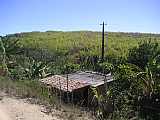
|
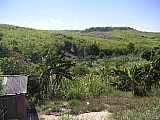
|

|

|

|

|

|

|

|

|

|
 sugar cane sugar cane
|

|

|
 landless movement landless movement
|
On the way we discovered Villa
Rial, the fazenda that delivers the best milk in Salvador and
has an amazing infrastructure for Relaxation Holidays
At sundown we found the main destination, the waterfall of Murutuba, where
we returned the next day...
From there its close to Cachoeira (the city name means water fall, but there is none) where we had good dinner on the river and found a pousada for only R$15 with view over the river!
 a cheap pousada a cheap pousada
|
 with
recycling art with
recycling art
|
 and a simple room and a simple room
|
 with
great view! : with
great view! :
|
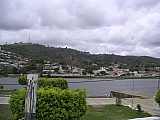
|

|

|

|
 Orixás (african saints) Orixás (african saints)
|

|
A speciality of the whole region is liquor, made with cachaša (suger cane alcool) and all kinds of fruits. Here we found the old specialist Rocky Pinto and bought 10 bottles from him, very cheap, and he made a perfect package...
a main atraction of Cachoeira is its only bridge. We did not
know about it so we had a major adventure when we crossed it the first night.
Its made for train and filled with heavy wood logs that used to be fixed
with metal stripes that broke. So the wood is loose, sometimes lacking and
balances, making a big noise. The metal parts jump up when a car drives over
the logs, so they add trebble to the sound -
listen
to a sound file made with my camera (not brilliant). the next day we
also discovered that trucks cannot cross on the pretty long bridge, so they have to wait. the light that helped in the past is badly broken...
Third Day: after another night in that pousada, rain took over.
we went back to the place we had found people treat mandioca, the root that
has been feeding the indians forever and still is the main energy source for
the poor. It needs special treatement as nature only offers it with a deadly
poison (probably hoping that we give up eating it :-). The result is farinha
which is used to thicken the beans and for
farofa, which most of the europeans
find extremely tastefull. Peope were very nice and we bought 7kg of still warm
farinha.
 Mandioca Mandioca
|
 peeling peeling
|

|
 graining graining
|
 squeezing
out poison squeezing
out poison
|
 drying drying
|

|
 the
back of our car... the
back of our car...
|
return
















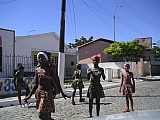
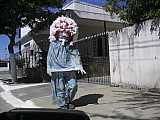














 sugar cane
sugar cane

 landless movement
landless movement




 a cheap pousada
a cheap pousada with
recycling art
with
recycling art and a simple room
and a simple room with
great view! :
with
great view! : 



 Orixás (african saints)
Orixás (african saints)









 ex train station
ex train station



 São Felix
São Felix

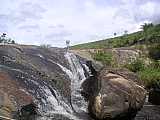






 Mandioca
Mandioca peeling
peeling
 graining
graining squeezing
out poison
squeezing
out poison drying
drying
 the
back of our car...
the
back of our car...